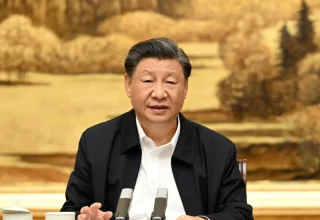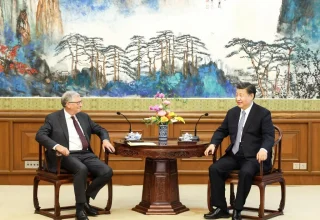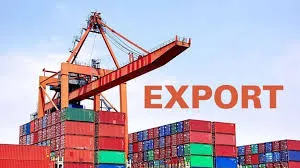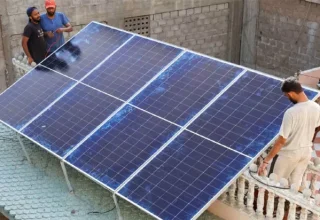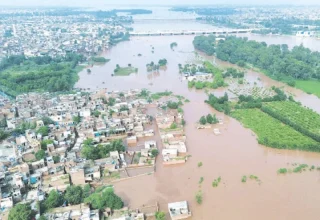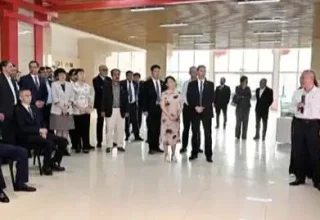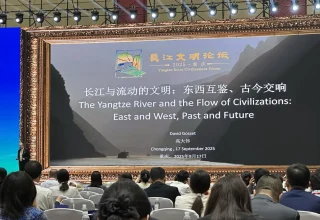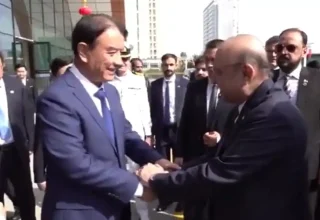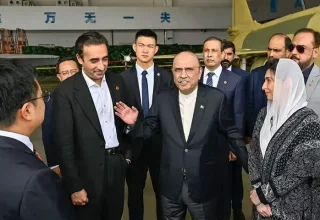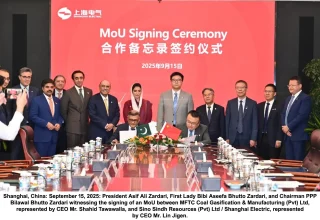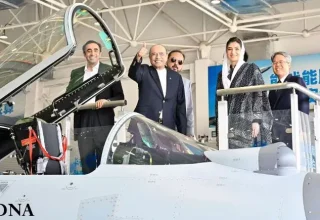
Launched in 2013, the Belt and Road Initiative (BRI) in just over a decade evolved from a visionary concept into the world’s most ambitious and transformative infrastructure and development framework. As of early 2025, more than 150 countries representing nearly 75% of the global population and over half of the world’s GDP have formally joined the BRI. This widespread participation underscores the initiative’s enduring appeal and relevance in addressing the pressing infrastructure and economic challenges faced by developing and emerging economies.
With cumulative investments and construction contract values exceeding $1 trillion, according to China’s Ministry of Commerce, the BRI has emerged as a driving force behind the modernization of transportation networks, energy infrastructure, industrial development and digital connectivity in partner countries. Far from being a speculative venture, the BRI today stands as a testament to multilateral cooperation, shared development goals and inclusive globalization.
At its core, the BRI aims to enhance physical connectivity across Asia, Europe, Africa and beyond through large-scale infrastructure projects. This includes roads, railways, ports, power plants and digital corridors that all are designed to facilitate the smooth movement of goods, people and capital.
One of the hallmark achievements of the BRI is the China-Europe Railway Express, which now links more than 100 cities across China with over 200 cities in Europe. As of 2024, over 70,000 train trips have been made since its inception, reducing freight times from months to just weeks and significantly lowering logistical costs. For landlocked Central Asian countries, this connectivity has opened new avenues for trade and industrial growth.
In Southeast Asia, the Jakarta-Bandung High-Speed Railway — the first of its kind in Indonesia — began operations in 2023. Covering 142 kilometers in under 45 minutes, the project not only showcases Chinese engineering expertise but also serves as a model for sustainable transport solutions in the region. It has stimulated local employment, technology transfer and regional tourism.
Another landmark BRI project is the Mombasa–Nairobi Standard Gauge Railway (SGR) in Kenya. Since opening in 2017, the SGR has transported millions of passengers and goods across the country, slashing travel time between major cities and revitalizing local economies along the route. It has become a cornerstone of Kenya’s Vision 2030 national development plan.
In Pakistan, the China-Pakistan Economic Corridor (CPEC) has brought about transformative changes. Spanning energy, transportation and industrial cooperation, CPEC has led to the construction of highways, energy projects that have alleviated chronic power shortages and the development of Gwadar Port, a strategic gateway to the Arabian Sea.
Beyond physical infrastructure, the BRI has significantly boosted economic development across its partner countries. By improving trade routes and lowering logistical barriers, the initiative has enhanced market access, attracted foreign direct investment and created millions of jobs.
In Central Asia, countries like Kazakhstan and Uzbekistan have capitalized on BRI-backed rail and logistics hubs to diversify their economies beyond hydrocarbons. In Africa, BRI-funded power plants, such as the Kafue Gorge Lower Hydro Project in Zambia and the Adama Wind Farm in Ethiopia have brought reliable electricity to underserved areas, powering homes, schools and businesses.
The economic ripple effects of these projects are substantial. A World Bank report estimates that BRI transport infrastructure could lift 7.6 million people out of extreme poverty and boost global trade by up to 6.2%. For many lower-income nations, the BRI has provided critical infrastructure financing when traditional lenders were either risk-averse or unavailable.
Furthermore, the initiative has helped establish Special Economic Zones (SEZs) in countries like Egypt, Laos and Djibouti which serve as magnets for investment and industrialization. These SEZs have helped create new value chains, improve export capacity and integrate local economies into the global market.
The scope of BRI-backed mega projects is vast and impressive. Some of the most notable completed or ongoing projects include are Port of Piraeus in Greece that is revitalizing under the BRI with investment from China’s COSCO Shipping, turning it into one of the busiest ports in the Mediterranean and a key maritime hub linking Asia and Europe.
Hungary-Serbia Railway that is a key project to connect Central and Southeastern Europe, reducing travel time and fostering intra-European connectivity under the BRI’s “16+1” cooperation format.
Khorgos Gateway (Kazakhstan-China border) that is Dubbed the “dry port of the century,” Khorgos is now a major inland logistics hub facilitating trade between East Asia and Europe.
East Coast Rail Link (Malaysia) that is one of Southeast Asia’s largest infrastructure projects, expected to connect the west and east coasts of Peninsular Malaysia, promoting regional integration and balanced development.
The Belt and Road Initiative has proven that development need not be a zero-sum game. While China provides leadership, financing and expertise, participating countries retain ownership and agency in shaping projects to suit their national interests. The success of the BRI lies in its adaptability, inclusiveness and its commitment to long-term partnerships.
Over the years, the BRI has also expanded into new frontiers, including the Digital Silk Road focused on building telecommunications infrastructure and e-commerce platforms and the Health Silk Road which saw BRI countries cooperating during the COVID-19 pandemic through medical aid and vaccine distribution.
Environmental sustainability, once a concern, is now being increasingly integrated into project planning through the “Green BRI” initiative, promoting renewable energy, eco-friendly construction and low-carbon development models.
As the Belt and Road Initiative marks its 12th anniversary, it is clear that its legacy is already being written across continents in the railways of Central Asia, the ports of Africa, the power plants of South Asia and the digital networks of Europe. With over $1 trillion in investments and hundreds of major projects completed or underway, the BRI has redefined how global infrastructure development is financed, implemented and shared.
More than just a Chinese initiative, the BRI has become a platform for mutual development, inclusive growth and cross-cultural dialogue. If the first 12 years were about building connections, the next decade promises to deepen them by paving the way for a more interconnected and equitable global future.



